
The best-selling Alif Baa is the first volume of the Al-Kitaab Arabic language program third edition is now available as a multimedia textbook with added functionality and ease of use for students and teachers. In this edition of the introduction to Arabic letters and sounds, English-speaking students will find an innovative integration of colloquial and formal (spoken and written) Arabic. Together, the book and new companion website provide learners with all the material necessary to learn the sounds of Arabic, write its letters, and begin speaking Arabic, including interactive, self-correcting exercises to enhance learning. The companion website also gives instructors additional online grading options.
This multimedia textbook includes Alif Baa, Third Edition and a Companion Website Access Key for Alif Baa, Third Edition.
FEATURES• Four-color design throughout the book features over 100 illustrations and photographs
• Gives learners and instructors color-coded options for the variety of language they wish to learn in speaking: Egyptian, Levantine, or formal Arabic (MSA)
• Introduces over 200 basic vocabulary words in all three forms of spoken and written Arabic side by side, including expressions for polite social interaction, and activates them in interactive homework exercises and classroom groupwork
• Includes video dialogues in Egyptian and Levantine, filmed in Cairo and Damascus
• Includes video footage of an Arabic calligrapher, capsules on Arabic culture, and images of street signs from Morocco, Egypt, and Lebanon
• Includes new English-Arabic and Arabic-English glossaries, searchable in the companion website
• Companion website features a fully integrated set of interactive exercises with all the video and audio materials and additional online course management and grading options for teachers
Alif Baa provides the essential first 20-25 contact (classroom) hours of the Al-Kitaab program, accompanied by 40-50 homework hours. Students who complete Alif Baa should reach a novice-intermediate to novice-high level of proficiency.
Companion Website Minimum System Requirements:WindowsOS: Microsoft Windows 98, NT, 2000, ME, XP, Vista, 7CPU: 233MHz Pentium BasedRAM: 128MBDISPLAY:1024x768, color displayBROWSER: Microsoft Internet Explorer 7.0 or higher, or Firefox version 3.0 or higherCONNECTION SPEED: A high-speed connection with throughput of 256 Kbps or more is recommended to use audio and video components.EQUIPMENT: You will need speakers or a headset to listen to audio and video components.PLUG-INS: You must have the latest version of Adobe Flash Player.
MacintoshOS: Mac OSXCPU: 233MHz Power MacintoshRAM: 128MBDISPLAY:1024x768, color displayBROWSER: Firefox version 3.0 or higher, or Sarari 3.0 or higherCONNECTION SPEED: A high-speed connection with throughput of 256 Kbps or more is recommended to use audio and video components. EQUIPMENT: You will need speakers or a headset to listen to audio and video components.PLUG-INS: You must have the latest version of Adobe Flash Player.
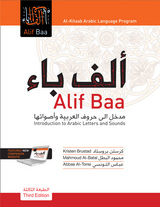
E-Textbooks are now available to purchase or rent through VitalSource.com! Please visit VitalSource for more information on pricing and availability.
As of January 1, 2021, Smart Sparrow Companion Websites are no longer available for any of our textbook programs.
New companion websites are coming soon, and will be hosted by Lingco. Instructors may sample the new companion websites now by visiting GUPTextbooks.com/companionwebsites.The full websites will be available for fall 2021 course adoption. Homework exercises are included in the textbook. Print answer keys are available for purchase through GUP. Ebook answer keys are available on the GUP website and VitalSource.com.
Alif Baa is the first volume of the best-selling Al-Kitaab Arabic Language Program, now in its third edition. In this edition of Alif Baa: Introduction to Arabic Letters and Sounds, English-speaking students will use the integrated method of learning colloquial and formal (spoken and written) Arabic together. Alif Baa provides learners with all the material necessary to learn the sounds of Arabic, write its letters, and begin speaking Arabic.
NEW: Audio and video content needed to complete the homework exercises is available to stream online for free on AlKitaabTextbook.com. (Note: DVDs that once featured the audio and video are now obsolete and no longer included in the books.)
FEATURES
• Four-color design throughout the book features over 100 illustrations and photographs• Gives learners and instructors color-coded options for the variety of language they wish to learn in speaking: Egyptian, Levantine, or formal Arabic (MSA)• Introduces over 200 basic vocabulary words in all three forms of spoken and written Arabic side by side, including expressions for polite social interaction, and activates them in interactive homework exercises and classroom groupwork• Includes video dialogues in Egyptian and Levantine, filmed in Cairo and Damascus, streaming on AlKitaabTextbook.com• Includes video footage of an Arabic calligrapher, capsules on Arabic culture, and images of street signs from Morocco, Egypt, and Lebanon, streaming on AlKitaabTextbook.com• Includes English-Arabic and Arabic-English glossaries
Alif Baa provides the essential first 20-25 contact (classroom) hours of the Al-Kitaab Arabic Language Program, accompanied by 40-50 homework hours. Students who complete Alif Baa should reach a novice-intermediate to novice-high level of proficiency.
Instructors may request complimentary print or digital Teacher’s Edition exam or desk copies, which include the answer key. To request access to any of the Teacher’s Edition Vital Source eTextbooks, instructors may visit VitalSource.com and select “Faculty Sampling” in the upper right corner. Please note: While answer keys are sold separately from the Student’s Edition, the corresponding answer key is included in the Teacher’s Edition.
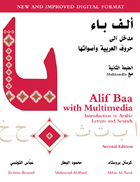
NEW AND IMPROVED DIGITAL FORMAT!
Since the release of the second edition of Alif Baa with DVDs in the fall of 2004, thousands of Arabic language learners have benefited from the integrated textbook and DVDs. This new version—Alif Baa with Multimedia—functions even better and features a new and improved digital format.
The content of Alif Baa with Multimedia, Second Edition, including the text and all of the audio and video on the disk, is exactly the same as that of Alif Baa with DVDs, Second Edition. Only the format of the disk has changed so that all files will be easy to play using the free Adobe Flash Player. All units are now included on only one disk. Teachers and students may use both versions of the textbook side-by-side in the classroom and notice no difference in content or appearance. It should not affect the learning experience or require teachers to do any additional preparation.
FEATURES• Introduces about 150 basic vocabulary words, including conventional forms of politeness and social greetings• Introduces a range of Arabic from colloquial to standard in authentic contexts• Includes video footage of an Arabic calligrapher, capsules on Arabic culture, and images of street signs from Morocco, Egypt, and Lebanon• Provides the essential first 20-25 contact hours of the Al-Kitaab program
The DVD that accompanies Alif Baa with Multimedia plays in any computer’s DVD drive. In order to view the files, you will need to download and install the free Flash Player from Adobe’s website.
System Requirements:
Windows• 450 MHz Intel Pentium II (or compatible) processor• MS Windows 2000, Windows XP, or Windows Vista• 128MB of RAM and 128MB of VRAM• Computer with DVD drive• Headphones or speakers• Flash Player (free download from http://www.adobe.com/products/flashplayer/)
Mac• 500 MHz PowerPC G3 or 1.33 GHz Intel Core Duo processor• Mac OS X v10.4 or 10.5• 128MB of RAM and 128MB of VRAM• Computer with DVD drive• Headphones or speakers• Flash Player (free download from http://www.adobe.com/products/flashplayer/)
Georgetown University Press is not able to provide technical support for the CDs and DVDs that accompany the Al-Kitaab series.

Alif Baa is the first volume of the best-selling Al-Kitaab Arabic Language Program, now in its third edition. In this edition of Alif Baa: Introduction to Arabic Letters and Sounds with Website, English-speaking students will use the integrated method of learning colloquial and formal (spoken and written) Arabic together. Alif Baa provides learners with all the material necessary to learn the sounds of Arabic, write its letters, and begin speaking Arabic.The accompanying companion website–included with the book–offers fully integrated exercises to use alongside the text.
FEATURES
•Four-color design throughout the book with over 100 illustrations and photographs
•Gives learners and instructors color-coded options for the variety of language they wish to learn in speaking: Egyptian, Levantine, or formal Arabic (MSA)
•Introduces over 200 basic vocabulary words in all three forms of spoken and written Arabic side by side, including expressions for polite social interaction, and activates them in interactive homework exercises and classroom groupwork
•Includes video dialogues in Egyptian and Levantine, filmed in Cairo and Damascus, streaming on the Publisher’s website
•Includes video footage of an Arabic calligrapher, capsules on Arabic culture, and images of street signs from Morocco, Egypt, and Lebanon, streaming on the Publisher’s website
•Includes English-Arabic and Arabic-English glossaries
Alif Baa provides the essential first 20-25 contact (classroom) hours of the Al-Kitaab Arabic Language Program, accompanied by 40-50 homework hours. Students who complete Alif Baa should reach a novice-intermediate to novice-high level of proficiency.
For Instructors: Separate print Teacher’s Editions of the Al-Kitaab Arabic Language Program are no longer available. Instead, instructors should submit exam and desk copy requests using ISBN 978-1-64712-181-5. Instructors may request an answer key, which contains the answers to exercises found in the textbook, separately.

Alif Baa is the first volume of the best-selling Al-Kitaab Arabic Language Program, now in its third edition. In this edition of Alif Baa: Introduction to Arabic Letters and Sounds with Website, English-speaking students will use the integrated method of learning colloquial and formal (spoken and written) Arabic together. Alif Baa provides learners with all the material necessary to learn the sounds of Arabic, write its letters, and begin speaking Arabic.The accompanying companion website–included with the book–offers fully integrated exercises to use alongside the text.
FEATURES
•Four-color design throughout the book with over 100 illustrations and photographs
•Gives learners and instructors color-coded options for the variety of language they wish to learn in speaking: Egyptian, Levantine, or formal Arabic (MSA)
•Introduces over 200 basic vocabulary words in all three forms of spoken and written Arabic side by side, including expressions for polite social interaction, and activates them in interactive homework exercises and classroom groupwork
•Includes video dialogues in Egyptian and Levantine, filmed in Cairo and Damascus, streaming on the Publisher's website
•Includes video footage of an Arabic calligrapher, capsules on Arabic culture, and images of street signs from Morocco, Egypt, and Lebanon, streaming on the Publisher's website
•Includes English-Arabic and Arabic-English glossaries
Alif Baa provides the essential first 20-25 contact (classroom) hours of the Al-Kitaab Arabic Language Program, accompanied by 40-50 homework hours. Students who complete Alif Baa should reach a novice-intermediate to novice-high level of proficiency.
For Instructors: Separate print Teacher's Editions of the Al-Kitaab Arabic Language Program are no longer available. Instead, instructors should submit exam and desk copy requests using ISBN 978-1-64712-181-5. Instructors may request an answer key, which contains the answers to exercises found in the textbook, separately.

eBook answer keys are now available on VitalSource.com! Please visit their website for more information on pricing and availability.
This answer key is to be used with Alif Baa: Introduction to Arabic Letters and Sounds, Third Edition. Please note that this answer key contains answers for exercises that are in the book. It does not contain answers for exercises formerly found on the Smart Sparrow Companion Website, which is no longer available after January 1, 2021.

This answer key is to be used with Alif Baa with Multimedia: Introduction to Letters and Sounds, Second Edition. The content of Alif Baa with Multimedia, Second Edition, including the text and all of the audio and video on the disk, is exactly the same as that of Alif Baa with DVDs, Second Edition.

National symbols, modern totems with ancient roots, remain entities for which men and women continue to march, debate, fight, and die. Modern political leaders still drape their campaigns in such symbols; modern revolutionaries still defile them. Identity Designs explores the source of this long-standing power––the way national symbols are selected, the manner in which their meaning is conveyed, their potential effects, and the sustenance of their power.
In particular, the book charts the role of design in the selection of symbolic images, thus demonstrating that symbols are chosen not just for what they convey, but how they convey their message. Karen Cerulo shows that the symbolic designs of a nation's identity are not simply the products of indigenous characteristics, as conventional wisdom might suggest. Rather, the banners and songs by which nations represent themselves are generated by broad social forces that transcend the peculiarities of any one nation. Cerulo's analysis acquaints readers with a set of social structural factors that delimit rules of symbolic expression. Further, the book suggests the benefits of adhering to these rules and explores the costs of violating them.
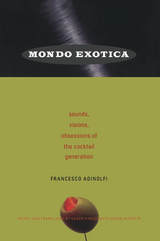
Adinolfi interviewed a number of exotica greats, and Mondo Exotica incorporates material from his interviews with Martin Denny, Esquivel, the Italian film composers Piero Piccioni and Piero Umiliani, and others. It begins with an extended look at the postwar popularity of exotica in the United States. Adinolfi describes how American bachelors and suburbanites embraced the Polynesian god Tiki as a symbol of escape and sexual liberation; how Les Baxter’s album Ritual of the Savage (1951) ushered in the exotica music craze; and how Martin Denny’s Exotica built on that craze, hitting number one in 1957. Adinolfi chronicles the popularity of performers from Yma Sumac, “the Peruvian Nightingale,” to Esquivel, who was described by Variety as “the Mexican Duke Ellington,” to the chanteuses Eartha Kitt, Julie London, and Ann-Margret. He explores exotica’s many sub-genres, including mood music, crime jazz, and spy music. Turning to Italy, he reconstructs the postwar years of la dolce vita, explaining how budget spy films, spaghetti westerns, soft-core porn movies, and other genres demonstrated an attraction to the foreign. Mondo Exotica includes a discography of albums, compilations, and remixes.
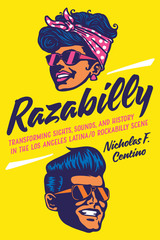
Vocals tinged with pain and desperation. The deep thuds of an upright bass. Women with short bangs and men in cuffed jeans. These elements and others are the unmistakable signatures of rockabilly, a musical genre normally associated with white male musicians of the 1950s. But in Los Angeles today, rockabilly's primary producers and consumers are Latinos and Latinas. Why are these "Razabillies" partaking in a visibly "un-Latino" subculture that's thought of as a white person's fixation everywhere else?
As a Los Angeles Rockabilly insider, Nicholas F. Centino is the right person to answer this question. Pairing a decade of participant observation with interviews and historical research, Centino explores the reasons behind a Rockabilly renaissance in 1990s Los Angeles and demonstrates how, as a form of working-class leisure, this scene provides Razabillies with spaces of respite and conviviality within the alienating landscape of the urban metropolis. A nuanced account revealing how and why Los Angeles Latinas/os have turned to and transformed the music and aesthetic style of 1950s rockabilly, Razabilly offers rare insight into this musical subculture, its place in rock and roll history, and its passionate practitioners.

Winner of the 2013 Sonya Rudikoff Award for best first book in Victorian Studies
Short-listed for the 2013 British Society for Literature and Science Book Prize.
Reading Victorian Deafness is the first book to address the crucial role that deaf people, and their unique language of signs, played in Victorian culture. Drawing on a range of works, from fiction by Charles Dickens and Wilkie Collins, to poetry by deaf poets and life writing by deaf memoirists Harriet Martineau and John Kitto, to scientific treatises by Alexander Graham Bell and Francis Galton, Reading Victorian Deafness argues that deaf people’s language use was a public, influential, and contentious issue in Victorian Britain.
The Victorians understood signed languages in multiple, and often contradictory, ways: they were objects of fascination and revulsion, were of scientific import and literary interest, and were considered both a unique mode of human communication and a vestige of a bestial heritage. Over the course of the nineteenth century, deaf people were increasingly stripped of their linguistic and cultural rights by a widespread pedagogical and cultural movement known as “oralism,” comprising mainly hearing educators, physicians, and parents.
Engaging with a group of human beings who used signs instead of speech challenged the Victorian understanding of humans as “the speaking animal” and the widespread understanding of “language” as a product of the voice. It is here that Reading Victorian Deafness offers substantial contributions to the fields of Victorian studies and disability studies. This book expands current scholarly conversations around orality, textuality, and sound while demonstrating how understandings of disability contributed to Victorian constructions of normalcy. Reading Victorian Deafness argues that deaf people were used as material test subjects for the Victorian process of understanding human language and, by extension, the definition of the human.
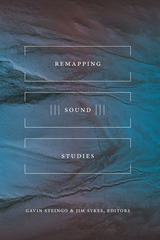
Contributors
Tripta Chandola, Michele Friedner, Louise Meintjes, Jairo Moreno, Ana María Ochoa Gautier, Michael Birenbaum Quintero, Jeff Roy, Jessica Schwartz, Shayna Silverstein, Gavin Steingo, Jim Sykes, Benjamin Tausig, Hervé Tchumkam
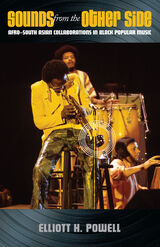
A sixty-year history of Afro–South Asian musical collaborations
From Beyoncé’s South Asian music–inspired Super Bowl Halftime performance, to jazz artists like John and Alice Coltrane’s use of Indian song structures and spirituality in their work, to Jay-Z and Missy Elliott’s high-profile collaborations with diasporic South Asian artists such as the Panjabi MC and MIA, African American musicians have frequently engaged South Asian cultural productions in the development of Black music culture. Sounds from the Other Side traces such engagements through an interdisciplinary analysis of the political implications of African American musicians’ South Asian influence since the 1960s.
Elliott H. Powell asks, what happens when we consider Black musicians’ South Asian sonic explorations as distinct from those of their white counterparts? He looks to Black musical genres of jazz, funk, and hip hop and examines the work of Miles Davis, John Coltrane, Rick James, OutKast, Timbaland, Beyoncé, and others, showing how Afro–South Asian music in the United States is a dynamic, complex, and contradictory cultural site where comparative racialization, transformative gender and queer politics, and coalition politics intertwine. Powell situates this cultural history within larger global and domestic sociohistorical junctures that link African American and South Asian diasporic communities in the United States.
The long historical arc of Afro–South Asian music in Sounds from the Other Side interprets such music-making activities as highly political endeavors, offering an essential conversation about cross-cultural musical exchanges between racially marginalized musicians.
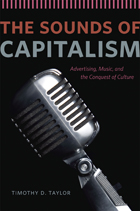
Timothy D. Taylor tracks the use of music in American advertising for nearly a century, from variety shows like The Clicquot Club Eskimos to the rise of the jingle, the postwar upsurge in consumerism, and the more complete fusion of popular music and consumption in the 1980s and after. The Sounds of Capitalism is the first book to tell truly the history of music used in advertising in the United States and is an original contribution to this little-studied part of our cultural history.
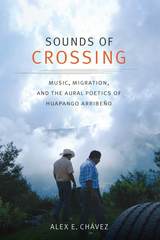
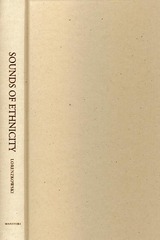
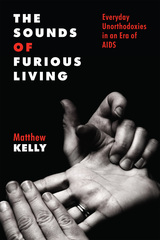
Four decades have passed since reports of a mysterious “gay cancer” first appeared in US newspapers. In the ensuing years, the pandemic that would come to be called AIDS changed the world in innumerable ways. It also gave rise to one of the late twentieth century’s largest health-based empowerment movements. Scholars across diverse traditions have documented the rise of the AIDS activist movement, chronicling the impassioned echoes of protestors who took to the streets to demand “drugs into bodies.”
And yet not all activism creates echoes. Included among the ranks of 1980s and 1990s-era AIDS activists were individuals whose expressions of empowerment differed markedly from those demanding open access to mainstream pharmaceutical agents. Largely forgotten today, this activist tradition was comprised of individuals who embraced unorthodox approaches for conceptualizing and treating their condition. Rejecting biomedical expertise, they shared alternative clinical paradigms, created underground networks for distributing unorthodox nostrums, and endorsed etiological models that challenged the association between HIV and AIDS. The theatre of their protests was not the streets of New York City’s Greenwich Village but rather their bodies. And their language was not the riotous chants of public demonstration but the often-invisible embrace of contrarian systems for defining and treating their disease.
The Sounds of Furious Living seeks to understand the AIDS activist tradition, identifying the historical currents out of which it arose. Embracing a patient-centered, social historical lens, it traces historic shifts in popular understanding of health and perceptions of biomedicine through the nineteenth and twentieth centuries to explain the lasting appeal of unorthodox health activism into the modern era. In asking how unorthodox health activism flourished during the twentieth century’s last major pandemic, Kelly also seeks to inform our understanding of resistance to biomedical authority in the setting of the twenty-first century’s first major pandemic: COVID-19. As a deeply researched portrait of distrust and disenchantment, The Sounds of Furious Living helps explain the persistence of movements that challenge biomedicine’s authority well into a century marked by biomedical innovation, while simultaneously posing important questions regarding the meaning and metrics of patient empowerment in clinical practice.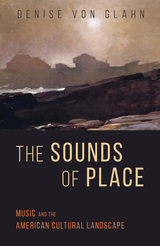
Wide-ranging and astute, The Sounds of Place explores high art music's role in the making of national myth and memory.
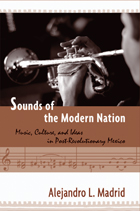
Sounds of the Modern Nation explores the development of modernist and avant-garde art music styles and aesthetics in Mexico in relation to the social and cultural changes that affected the country after the 1910-1920 revolution. Alejandro Madrid argues that these modernist works provide insight into the construction of individual and collective identities based on new ideas about modernity and nationality. Instead of depicting a dichotomy between modernity and nationalism, Madrid reflects on the multiple intersections between these two ideas and the dialogic ways through which these notions acquired meaning.
Madrid challenges the view that Latin American modernist music and other art were mere imitations of European trends, advancing instead the argument that Latin American artists resignified European ideas according to their specific historical and cultural circumstances. His work shows how microtonal and futurist music, modernist and avant-garde aesthetics, as well as indigenist and indianist ideas, entered a process of negotiation that ultimately shaped the ideological framework of twentieth-century Mexico.
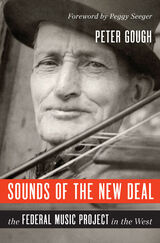
From the onset, administrators and artists debated whether to represent highbrow, popular, or folk music in FMP activities. Though the administration privileged using "good" music to educate the public, in the West local preferences regularly trumped national priorities and allowed diverse vernacular musics to be heard. African American and Hispanic music found unprecedented popularity while the cultural mosaic illuminated by American folksong exemplified the spirit of the Popular Front movement. These new musical expressions combined the radical sensibilities of an invigorated Left with nationalistic impulses. At the same time, they blended traditional patriotic themes with an awareness of the country's varied ethnic musical heritage and vast--but endangered--store of grassroots music.

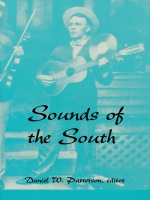
"Sounds of the South"—a 1989 conference that gathered record collectors, folklorists, musicians, record producers, librarians, archivists, and traditional music lovers—celebrated the official opening of the Southern Folklife Collection with the John Edwards Memorial Collection at the library of the University of North Carolina, Chapel Hill. Based on that conference, Sounds of the South includes Bill Malone's account of his own career as fan and scholar of country music, Paul Oliver on European blues scholarship, and Ray Funk on researching Black Gospel Quartets.
The contributors look at a number of topics related to the role of the archivist/folklorist in recording and documenting the music of the South—evaluating past fieldwork and current needs in documentation, archival issues, prospects for the publication of recordings, and changes in music and technology. Written in an accessible style, this volume will be of interest to all those concerned with preserving the music of the American South.
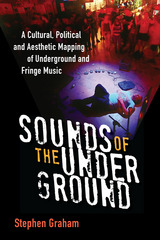
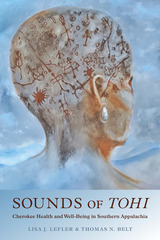
Sounds of Tohi: Cherokee Health and Well-Being in Southern Appalachia is the result of almost two decades of work by medical anthropologist Lisa J. Lefler and Cherokee elder and traditionalist Thomas N. Belt. The narrative consists of a dialogue between them that displays traditional Indigenous knowledge as well as the importance of place for two people from cultures and histories that intersect in the mountains of Southern Appalachia. Together, Lefler and Belt decolonize thinking about health, well-being, and environmental issues through the language and experiences of people whose identity is inextricably linked to the mountains and landscape of western North Carolina.
Lefler and Belt discuss several critical cultural concepts that explain the science of relationships with this world, with the spirit world, and with people. They explore tohi, the Cherokee concept of health, which offers a more pervasive understanding of relationships in life as balanced and moving forward in a good way. They converse about the importance of matrilineality, particularly in light of community healing, the epistemologies of Cherokee cosmography, and decolonizing counseling approaches.
The discussions here offer a different way of approaching the issues that face Americans in this difficult time of division. Lefler and Belt share their urgency to take action against the wholesale exploitation of public lands and the shared environment, to work to perpetuate tribal languages, to preserve the science that can make a difference in how people treat one another, and to create more forums that are inclusive of Native and marginalized voices and that promote respect and appreciation of one another and the protection of sacred places. Throughout, they rely on the preservation of traditional knowledge, or Native science, via Native language to provide insight as to why people should recognize a connection to the land.
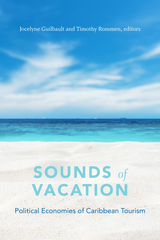
Contributors. Jerome Camal, Steven Feld, Francio Guadeloupe, Jocelyne Guilbault, Jordi Halfman, Susan Harewood, Percy C. Hintzen, Timothy Rommen
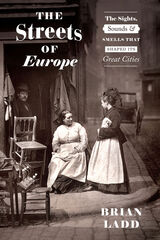
Brian Ladd recounts a rich social and cultural history of the European city street, tracing its transformation from a lively scene of trade and crowds into a thoroughfare for high-speed transportation. Looking closely at four major cities—London, Paris, Berlin, and Vienna—Ladd uncovers both the joys and the struggles of a past world. The story takes us up to the twentieth century, when the life of the street was transformed as wealthier citizens withdrew from the crowds to seek refuge in suburbs and automobiles. As demographics and technologies changed, so did the structure of cities and the design of streets, significantly shifting our relationships to them. In today’s world of high-speed transportation and impersonal marketplaces, Ladd leads us to consider how we might draw on our history to once again build streets that encourage us to linger.
By unearthing the vivid descriptions recorded by amused and outraged contemporaries, Ladd reveals the changing nature of city life, showing why streets matter and how they can contribute to public life.
READERS
Browse our collection.
PUBLISHERS
See BiblioVault's publisher services.
STUDENT SERVICES
Files for college accessibility offices.
UChicago Accessibility Resources
home | accessibility | search | about | contact us
BiblioVault ® 2001 - 2024
The University of Chicago Press









